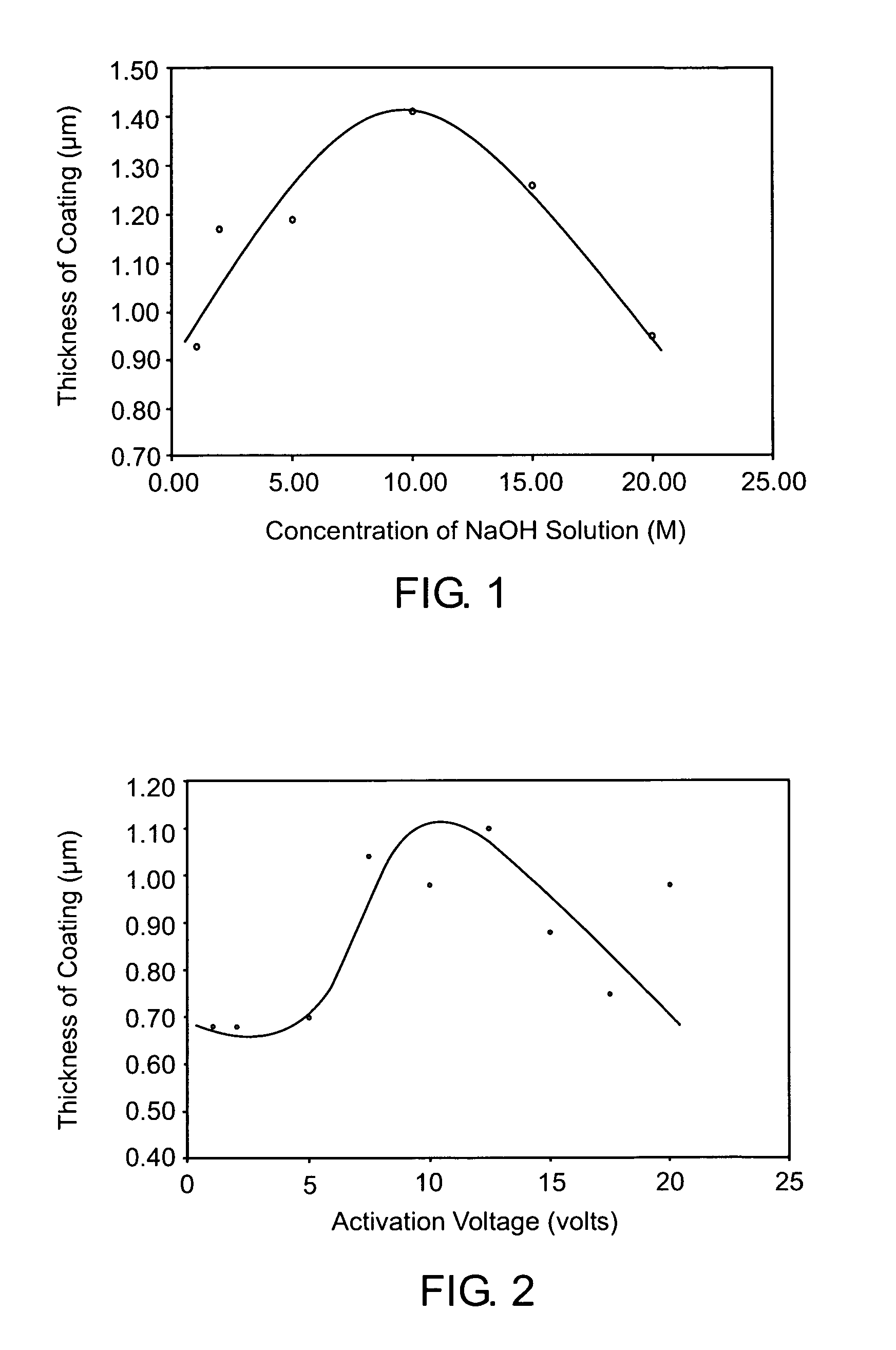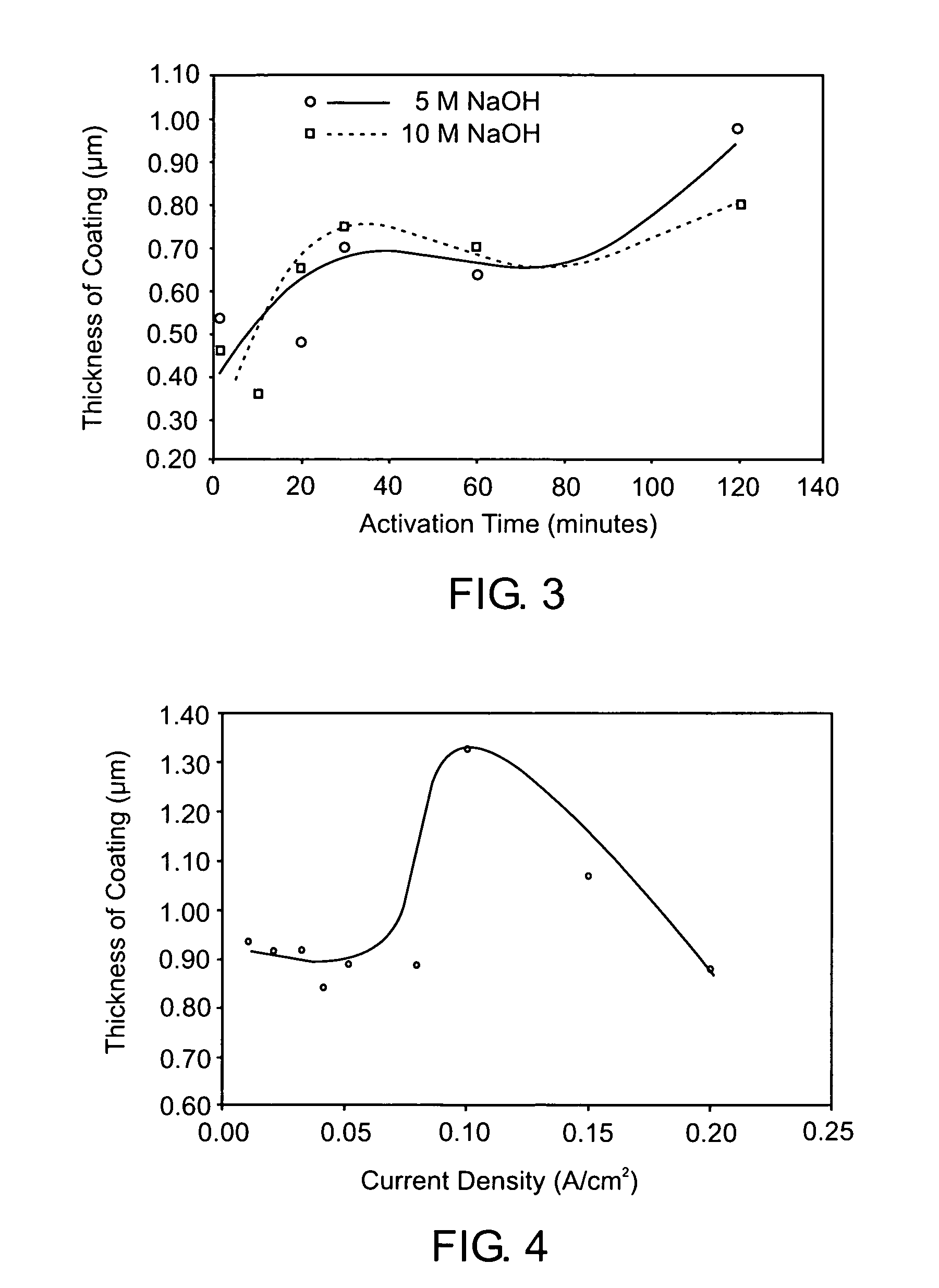Bioceramic coating of a metal-containing substrate
a bioceramic and metal-containing technology, applied in the direction of prosthesis, packaging foodstuffs, impression caps, etc., can solve the problems of toxicity and allergy, premature implant failure, loosening of implants, etc., and achieve excellent morphological characteristics, reduce durability, and encourage bone growth
- Summary
- Abstract
- Description
- Claims
- Application Information
AI Technical Summary
Benefits of technology
Problems solved by technology
Method used
Image
Examples
Embodiment Construction
[0058]Other advantages that are inherent to the structure are obvious to one skilled in the art. The embodiments are described herein illustratively and are not meant to limit the scope of the invention as claimed. Variations of the foregoing embodiments will be evident to a person of ordinary skill and are intended by the inventor to be encompassed by the following claims.
[0059]Preparation of Substrate:
[0060]A 10 mm×10 mm×1.7 mm plate of Ti6Al4V-ELI (extra-low interstitial) alloy formed in accordance with ASTM standard F136-98 having a chemical composition (wt %) of C 0.02, N 0.008, Fe 0.213, Al 6.16, V 3.92, O 0.12 and Ti balance (available from RMI Titanium Company, Mississauga, Canada), was mechanically polished using SiC paper #400 and #600, and 9 μm Al2O3 paper. A titanium wire was spot-welded to the plate for handling. The plate was ultrasonically cleaned for 10 minutes in acetone, then 10 minutes in ethanol and then 10 minutes in deionized water. The cleaned plate was then e...
PUM
| Property | Measurement | Unit |
|---|---|---|
| voltage | aaaaa | aaaaa |
| current density | aaaaa | aaaaa |
| temperature | aaaaa | aaaaa |
Abstract
Description
Claims
Application Information
 Login to View More
Login to View More - R&D
- Intellectual Property
- Life Sciences
- Materials
- Tech Scout
- Unparalleled Data Quality
- Higher Quality Content
- 60% Fewer Hallucinations
Browse by: Latest US Patents, China's latest patents, Technical Efficacy Thesaurus, Application Domain, Technology Topic, Popular Technical Reports.
© 2025 PatSnap. All rights reserved.Legal|Privacy policy|Modern Slavery Act Transparency Statement|Sitemap|About US| Contact US: help@patsnap.com



